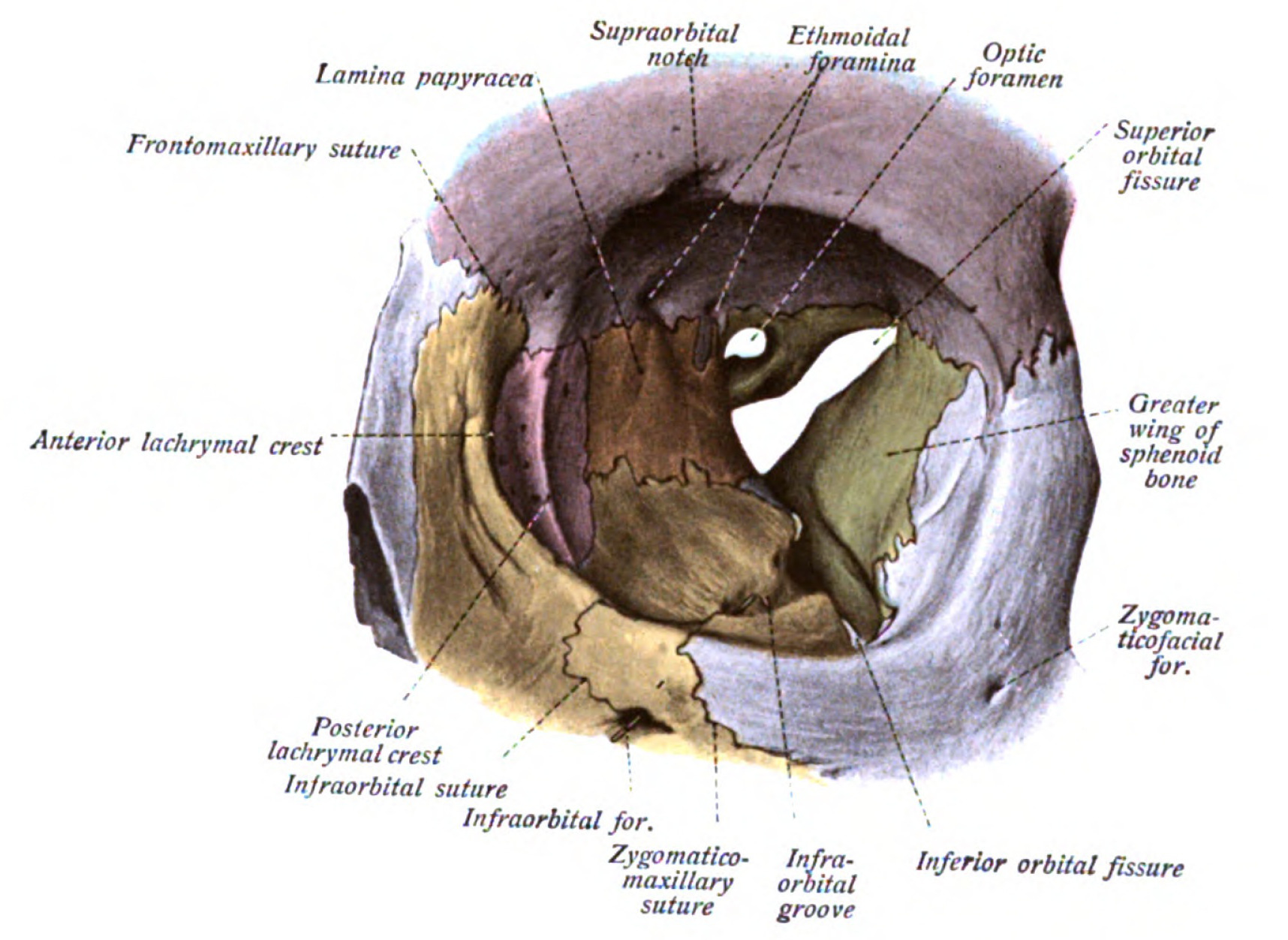Playlist
Show Playlist
Hide Playlist
Extraocular Muscles
-
Slides Anatomy Eye.pdf
-
Download Lecture Overview
00:01 In total, there are seven extra ocular muscles of the orbit. 00:06 Six of which control the movements of the eye. 00:09 These include the four recti, and the two oblique muscles and the seventh, the levator palpebrae superioris controls the movement of the upper eyelid. 00:21 The levator palpebrae superioris is a thin triangular muscle, which originates from the inferior aspect of the lesser wing of the sphenoid on the roof of the orbit and then it passes anteriorly directly over the superior rectus muscle to insert in the upper eyelid on the superior border of the tarsal plate. 00:42 It receives its motor innervation from the ocular motor nerve and primarily functions to elevate the eyelid and open the eye. 00:51 Injury to the levator palpebrae superioris muscle causes any lateral dropping of the upper eyelid. 00:58 This is known as ptosis or blepharoptosis. 01:03 The superior rectus muscle is the largest of the four ocular recti. 01:08 It takes us origin from the upper part of the common tendinous ring, we discussed earlier above the optic canal. 01:15 It travels anteriorly and in somewhat of a slanted manner and then inserts into the upper part of the sclera. 01:22 Additionally, I mentioned earlier the superior rectus lies underneath the levator palpebrae superioris as they pass interiorly. 01:32 That can connective tissue sheaves of these muscles are fused allowing them to act in concert to a certain degree. 01:38 Thus, when the superior rectus elevates the eye, The levator palpebrae superioris also elevates the eyelid. 01:47 It receives its motor innervation from the superior branch of the ocular motor nerve and primarily functions to elevate, adduct, and intort the eye. 01:59 Intorsion refers to the inward rotational movement of the eye, best understood by imagining the midpoint of the upper rim of the cornea being rotated medially. 02:10 The inferior rectus muscle arises from the common tendinous ring below the optic canal, it travels along the floor of the orbit in a similar direction as a superior rectus and then attaches to the inferior sclera. 02:25 It is innervated by the inferior branch of the ocular motor nerve in functions to depress, adduct, and extort the eye, in a similar fashion to the superior oblique by having an attachment to the tarsal plate of the lower eyelid. 02:41 The inferior rectus can also cause lowering of the eyelid when depressing the eye. 02:49 The medial rectus arises from the medial part of the common tendinous ring and also from the neural sheath of the optic nerve. 02:58 It travels along the medial wall the orbit to insert on the medial surface of the sclera. 03:05 The medial rectus receives its innervation from the inferior branch of the ocular motor nerve in functions to add depth to the eye. 03:14 The lateral rectus muscle arises from the lateral part of the common tendinous ring and also from the greater wing of the sphenoid. 03:22 It travels along the lateral all the orbit to insert on the lateral surface of the sclera. 03:27 In contrast to all the other extrinsic muscles, the lateral rectus, we see this innervation from the abducens nerve or the six cranial nerve, it functions to draw the eyeball laterally or to abductive. 03:42 The superior oblique muscle takes origin from the lesser wing of the sphenoid bone superior immediately to the optic canal. 03:50 It passes internally towards the trochlear fossa where it passes through a fibrocartilaginous trochlea and then descends posterolaterally to the superolateral sclera. 04:02 This muscle receives its innervation from the fourth cranial nerve or the trochlear nerve in functions to intort, depress, and abduct the eye. 04:14 The inferior oblique arises from the orbital surface of the maxilla and passes posterior laterally along the floor of the orbit to insert on the federal lateral part of the sclera. 04:25 It is innervated by the inferior branch of the ocular motor nerve in functions to elevate, abduct and extort the eyeball. 04:35 With this, we conclude our discussion of the musculature of the orbit. 04:39 However, before we proceed to the next topic, I would like to add that the movements of the eyeball are much more complex and are dependent on the positioning of the eye along the horizontal, vertical and intero posterior axis as well as on the antagonistic actions of the extrinsic muscle groups on each other. 04:59 Thus the function of the extra ocular muscles, we have just gone over our with the eye in its resting position looking internally. 05:09 And now we come to the last topic of our discussion, the accessory structures of the visual apparatus. 05:16 The first of these structures we will be discussing are the eyelids.
About the Lecture
The lecture Extraocular Muscles by Craig Canby, PhD is from the course Head and Neck Anatomy with Dr. Canby.
Included Quiz Questions
Which muscle controls the movement of the upper eyelid?
- Levator palpebrae superioris
- Medial oblique
- Lateral oblique
- Superior rectus
- Medial rectus
Which of the following is a function of the superior rectus muscle?
- Intorsion
- Extorsion
- Abduction
- Depression
- Magnification
Customer reviews
5,0 of 5 stars
| 5 Stars |
|
5 |
| 4 Stars |
|
0 |
| 3 Stars |
|
0 |
| 2 Stars |
|
0 |
| 1 Star |
|
0 |




